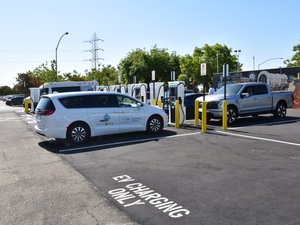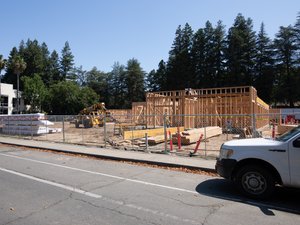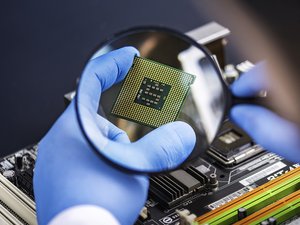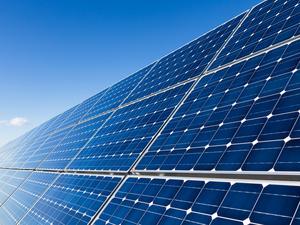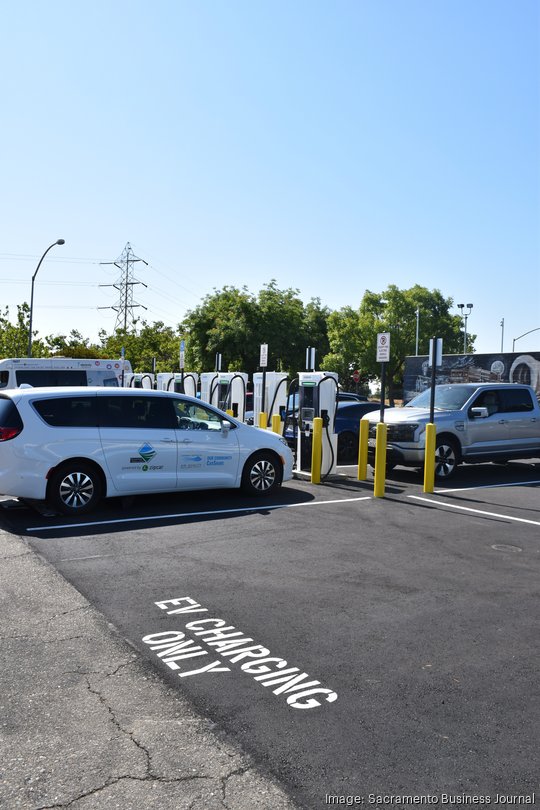
The California Energy Commission on Wednesday is expected to move millions of dollars of federal money around between state agencies to build out zero-emission vehicle corridors on major highways in the Golden State.
The money will pay for installing fast-charging equipment for electric vehicles, which will be built out by private companies. Contract bids are expected to go out this quarter.
On Wednesday, the commission is expected to agree to an interagency agreement with Caltrans for nearly $2.4 billion in federal National Electric Vehicle Infrastructure Program money.
The agreement is necessary because the NEVI program, overseen by the Federal Highway Administration, allocates its funds to state departments of transportation, but in California, the Energy Commission is overseeing the development of charging corridors.
The $5 billion NEVI Program was enacted under the $1.2 trillion Infrastructure Investment and Jobs Act, which was signed into law in 2021.
Under the NEVI rules, private entities must be the lead applicants for projects, though they can partner with public agencies, according to the Energy Commission.
Corridors to get funding in the Sacramento region include Interstate 5, Interstate 80, Highway 99, parts of Highway 50 from Pollock Pines to Lake Tahoe, Interstate 505 and Highway 20.
California is proposing to fund more than $3 billion in zero-emission vehicle infrastructure over five years. Additionally, funding from the big three public utilities regulated by the California Public Utilities Commission will add another approximately $1 billion to electric vehicle charging infrastructure. The utilities regulated by the PUC are Pacific Gas & Electric Co. (NYSE: PCG), Southern California Edison and San Diego Gas & Electric Company.
California currently has about 80,000 public EV chargers statewide built over 15 years, and it has a goal of adding more than that every year for more than a decade. The state has a goal of having 250,000 public charging stations by 2025 and about 1.2 million of them by 2030.
Public chargers are important because they power up electric vehicles out on long trips and they provide primary charging for people who don’t have home chargers. Currently, about 80% of people with electric cars charge at home, but that isn’t an option for people who can’t install a home charger in their home or for people who live in apartments or older homes.
In California, public chargers are even more vital in light of the fact that the state has mandated that all new cars sold in California starting in 2035 be zero-emission vehicles, of which the lion’s share currently are electric vehicles.
At its meeting Wednesday, the Energy Commission is seeking a transfer of $383.7 million from Caltrans to administer California’s NEVI formula, and also to get $2 billion in California’s NEVI money for charging infrastructure.
That opens the way for the commission to begin releasing competitive solicitations for bids for doing the work.
California’s initial corridors have been mapped out and can be seen at this site.
